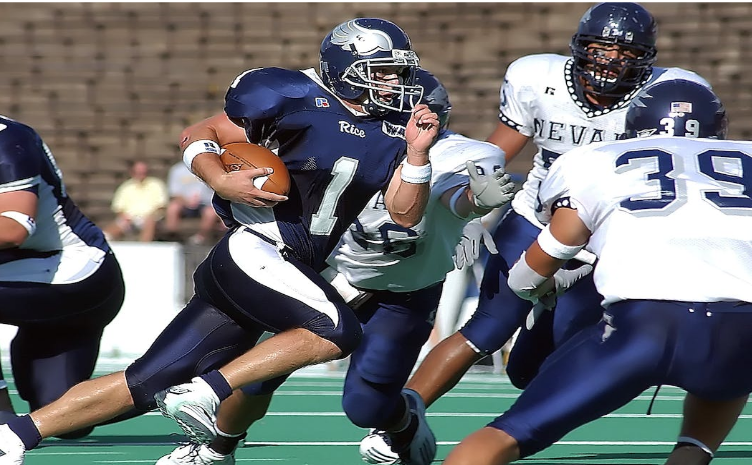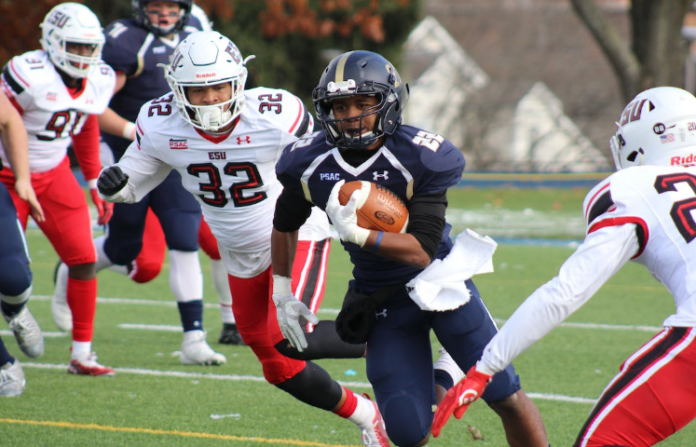What is a wheel route in football? We’ve all marveled at those jaw-dropping moments when a running back suddenly breaks free for a significant gain through the air. More often than not, what we’re witnessing is the effectiveness of a well-executed wheel route. But what exactly does this play entail, and why does it often leave defenses confused? Let’s explore the fascinating world of the wheel route, breaking down its mechanics and uncovering the strategies that make it a go-to choice for offenses.
The Basics: Defining the Wheel Route
At its core, a wheel route is a pass pattern typically run by a running back or sometimes a slot receiver. The route gets its name from the shape it traces on the field – imagine a wheel rolling forward. The player starts by running parallel to the line of scrimmage, then suddenly turns upfield, creating a curved path that resembles the outer edge of a wheel.
The Anatomy of a Wheel Route
- Initial flat route: The player begins by running towards the sideline
- The turn: A sharp 90-degree cut upfield
- Vertical stem: Sprinting straight down the sideline
This simple yet effective pattern can cause major headaches for defenses, especially when combined with other routes and formations. But why is it so potent?
The Power of Deception: Why Wheel Routes Work
The wheel route’s effectiveness lies in its ability to fool defenders. When a running back initially moves towards the flat, linebackers and safeties often expect a short dump-off pass. By the time they realize the back is turning upfield, it’s often too late – they’re beat, and a big play is in the making.
Exploiting Defensive Mismatches
One of the greatest strengths of the wheel route is how it creates favorable matchups. Typically, a linebacker will be responsible for covering the running back. While linebackers are great at stopping the run, they often struggle to keep up with speedy backs in open space. This mismatch can lead to huge gains for the offense.
The Art of Running a Perfect Wheel Route
For players looking to master this route, there are several key elements to focus on:
- Timing: Synchronizing with the quarterback’s dropback
- Selling the flat: Making defenders believe you’re staying short
- Exploding upfield: A sudden burst of speed when turning vertical
- Tracking the ball: Adjusting to deep throws while on the move
It’s not just about athletic ability – a great wheel route runner needs to have a high football IQ and the ability to read defenses on the fly.
Wheel Route Variations: Spicing Up the Playbook
While the basic wheel route is effective on its own, creative offensive coordinators have developed numerous variations to keep defenses guessing. Let’s explore some of these exciting twists on the classic wheel.
The Double Wheel: Twice the Trouble
Imagine the confusion when not one, but two players run wheel routes simultaneously. This variation often involves both running backs in a two-back set or a running back and slot receiver. It puts immense pressure on the defense to cover multiple deep threats, often resulting in a big play for one of the wheel runners.
The Delayed Wheel: Patience Pays Off
In this variation, the back initially stays in to block, lulling the defense into a false sense of security. After a brief pause, they release into their route, often finding themselves wide open as defenders have shifted their focus elsewhere.
The Option Wheel: Adaptability in Motion
Here, the running back has the option to either continue their flat route or turn upfield based on how the defense reacts. This requires great chemistry between quarterback and back, but when executed properly, it’s nearly impossible to defend.
Defending the Wheel: A Coordinator’s Nightmare

Now that we’ve sung the praises of the wheel route, you might be wondering – how on earth do you stop it? Defending against this play is no easy task, but there are strategies that can help neutralize its effectiveness.
Man Coverage: Stick Like Glue
In man-to-man defense, the key is having defenders who can match the speed and agility of the offensive players. Safeties or nickel corners are often better equipped to handle wheel routes than linebackers.
Zone Coverage: Passing Off Responsibility
Zone defenses can be effective against wheel routes if defenders communicate well and understand when to pass off coverage responsibilities. However, the spaces between zones can be exploited if the offense times the route perfectly.
Pattern-Matching: The Best of Both Worlds
This hybrid approach combines elements of man and zone coverage, allowing defenders to switch assignments based on how routes develop. It’s complex but can be very effective against sophisticated passing attacks.
Famous Wheel Route Moments in Football History

The wheel route has produced some unforgettable plays over the years. Let’s relive a few of these iconic moments that showcase the route’s game-changing potential.
The “Philly Special” Twist
While not a traditional wheel route, the famous “Philly Special” play in Super Bowl LII incorporated elements of the wheel concept. The misdirection and unexpected receiver (quarterback Nick Foles) embodied the spirit of surprise that makes wheel routes so effective.
College Football Classics
In the college game, where mismatches can be even more pronounced, wheel routes have led to numerous last-second victories and momentum-swinging touchdowns. From SEC showdowns to PAC-12 shootouts, this route has left its mark on campuses nationwide.
Incorporating the Wheel Route in Your Offense
For coaches looking to add this dynamic play to their arsenal, here are some tips for effective implementation:
- Start with the basics: Master the timing and execution of the standard wheel route
- Build complementary plays: Design routes that work well in combination with the wheel
- Practice, practice, practice: Repetition is key for perfecting the nuances of this route
- Scout your personnel: Identify which players have the skill set to excel at running wheel routes
- Analyze defensive tendencies: Look for weaknesses in opposing defenses that the wheel route can exploit
Remember, the wheel route is not just a play – it’s a concept that can be adapted and integrated into various offensive schemes.
The Future of the Wheel Route
As defenses become more sophisticated, offenses must continually evolve. What does the future hold for the wheel route?
Technology and Training
With advances in virtual reality and AI-assisted coaching, players may soon be able to practice wheel routes against virtual defenders, honing their skills like never before.
Analytics-Driven Strategy
As teams dive deeper into data analytics, we may see the wheel route deployed with even greater precision, targeting specific defensive players or situations where it’s statistically most effective.
New Variations on the Horizon
Innovative coaches are always looking for the next big thing. Don’t be surprised if we see new twists on the wheel route concept emerging in the coming years, perhaps incorporating pre-snap motion or option elements.
Conclusion: The Wheel Keeps Turning
The wheel route stands as a testament to the beautiful complexity of football. It’s a play that embodies the sport’s blend of physical skill, mental acuity, and strategic depth. Whether you’re a coach, player, or fan, understanding the wheel route adds a new layer of appreciation for the game we love.
As we’ve seen, this seemingly simple pattern can be a game-changer when executed properly. It’s a reminder that in football, as in life, sometimes the most effective path forward isn’t always a straight line – sometimes, you need to turn the wheel.
FAQs About the Wheel Route
Can tight ends run effective wheel routes?
Absolutely! While less common, tight ends with good speed can be very effective on wheel routes, especially against slower linebackers.
How often do NFL teams typically use wheel routes in a game?
The frequency varies by team and game situation, but most NFL teams will attempt at least a few wheel routes per game, either as a primary read or a check-down option.
Are wheel routes effective in youth football?
Yes, but they require good timing and understanding of the game. As players develop their skills, wheel routes can become a valuable part of a youth offense.
What’s the key to defending against a wheel route?
Good communication and awareness are crucial. Defenders need to recognize the route quickly and either maintain tight coverage or pass off responsibilities effectively in zone schemes.
Can wheel routes be run from the wide receiver position?
While less common, receivers can certainly run wheel routes, especially from a slot position. This can be particularly effective in creating mismatches against linebackers or safeties.


